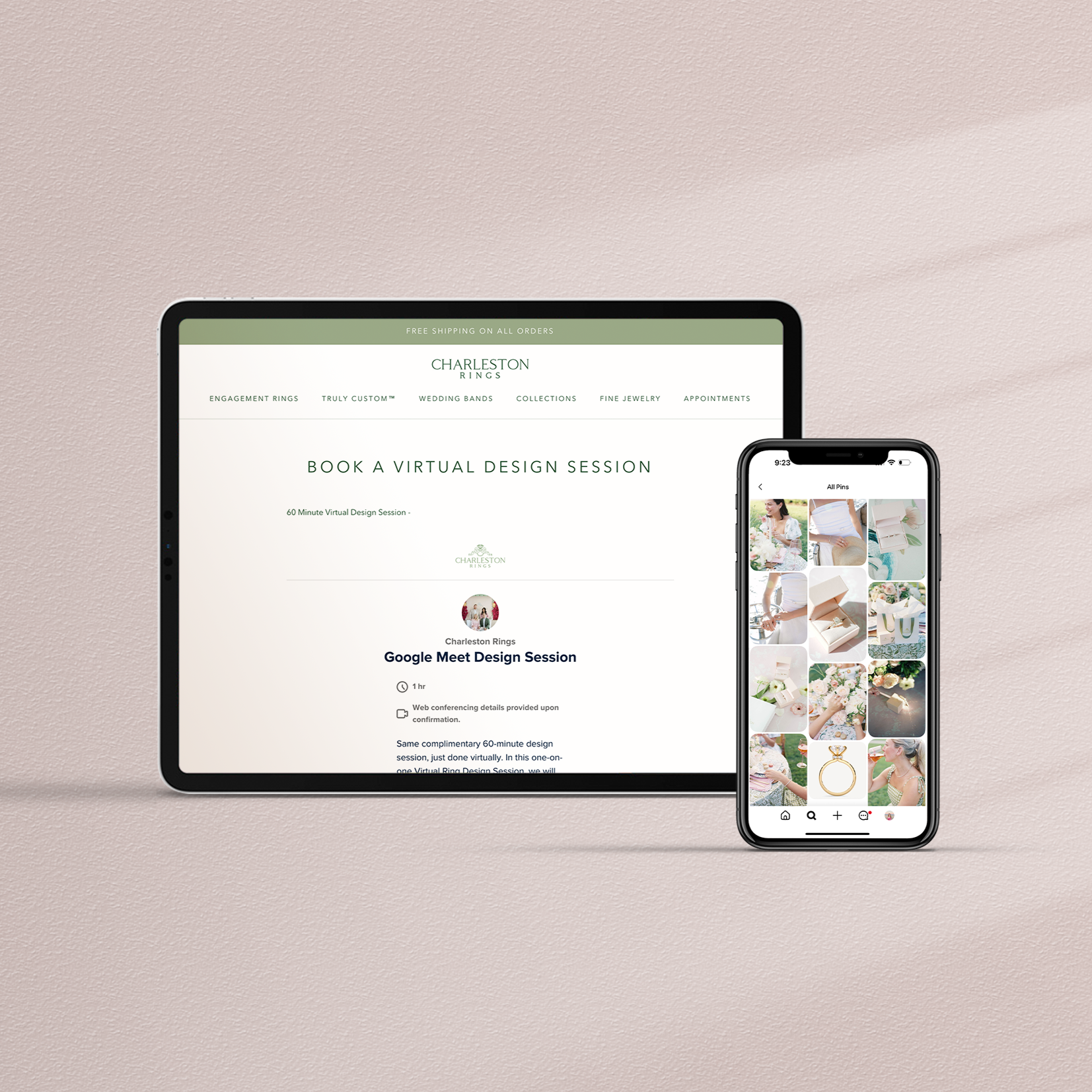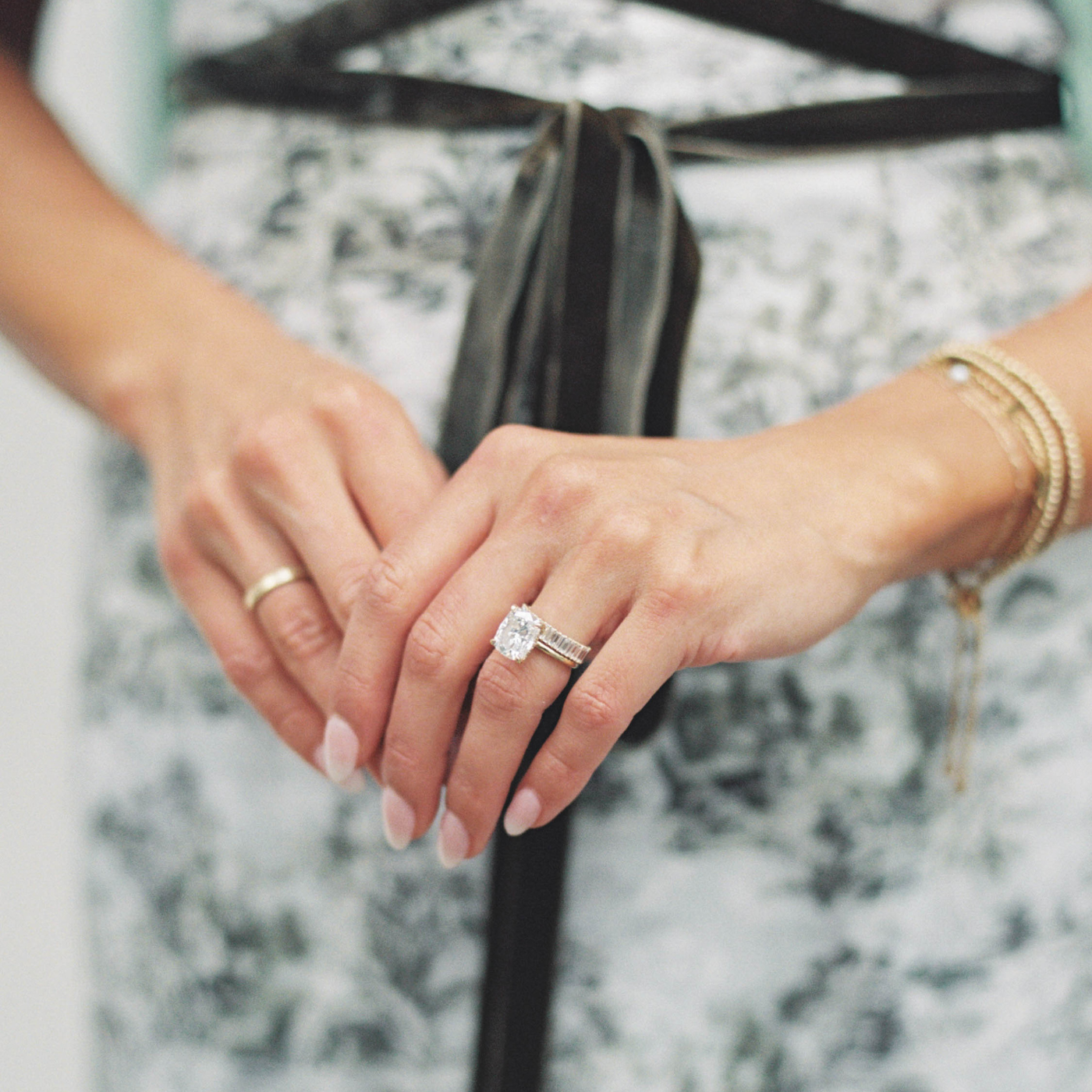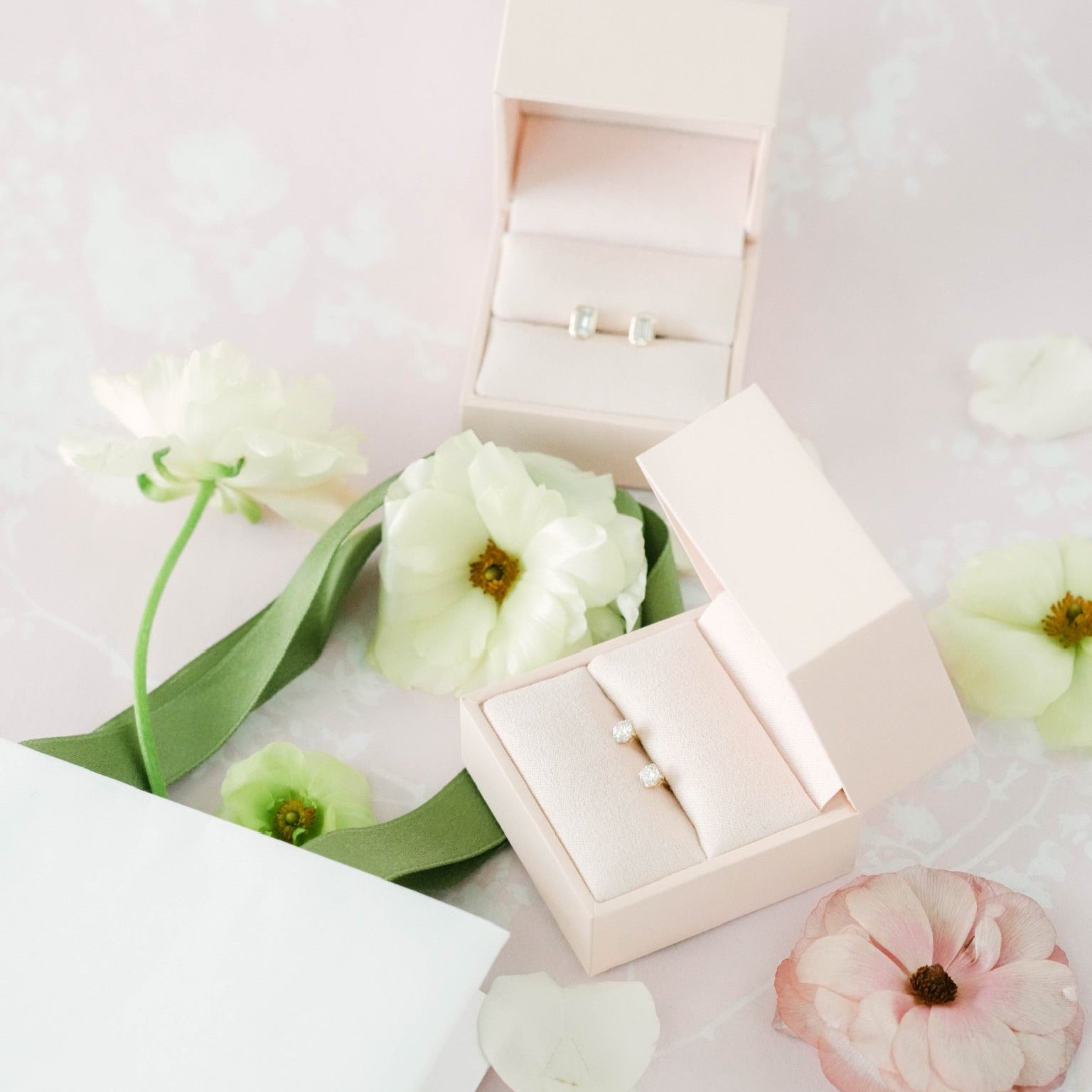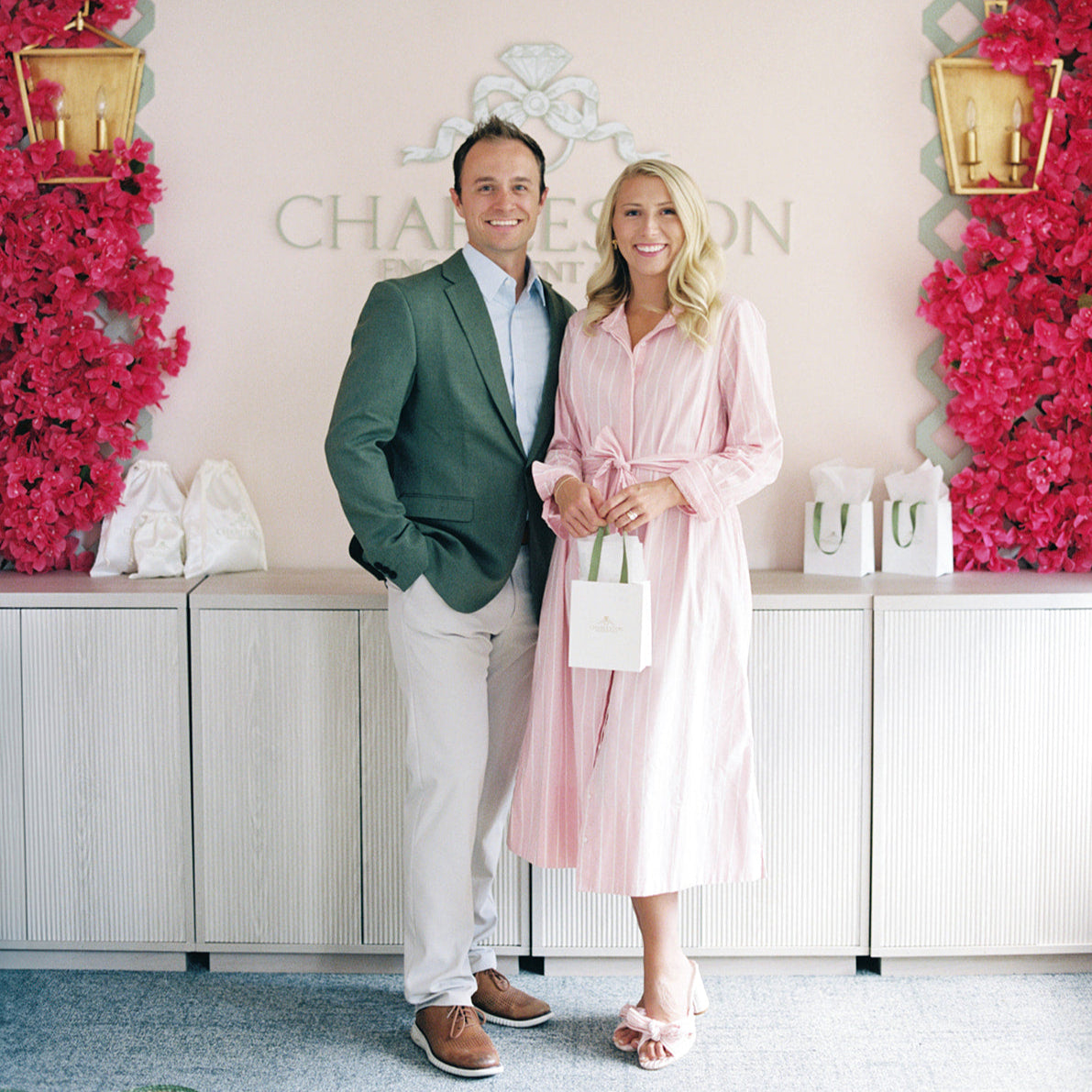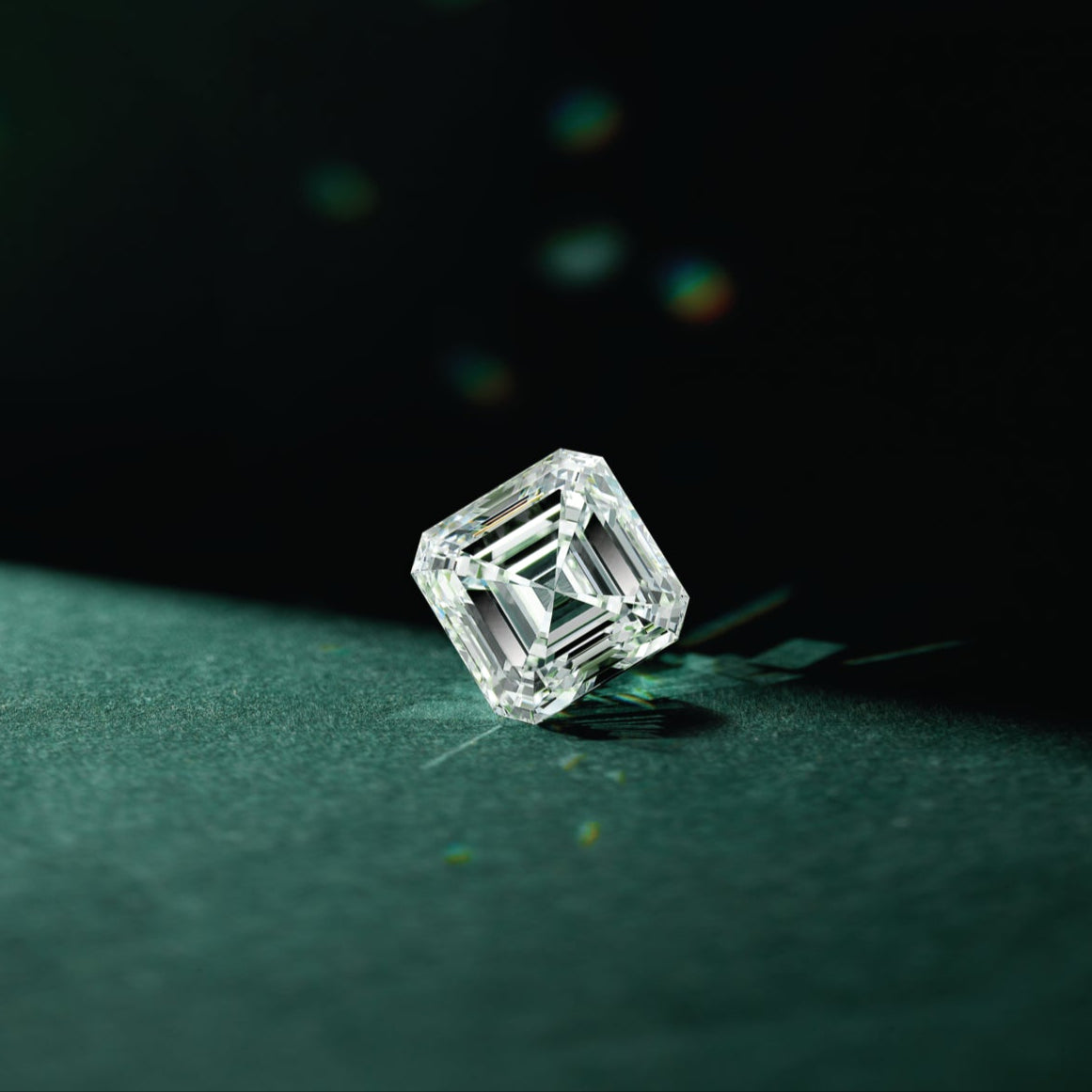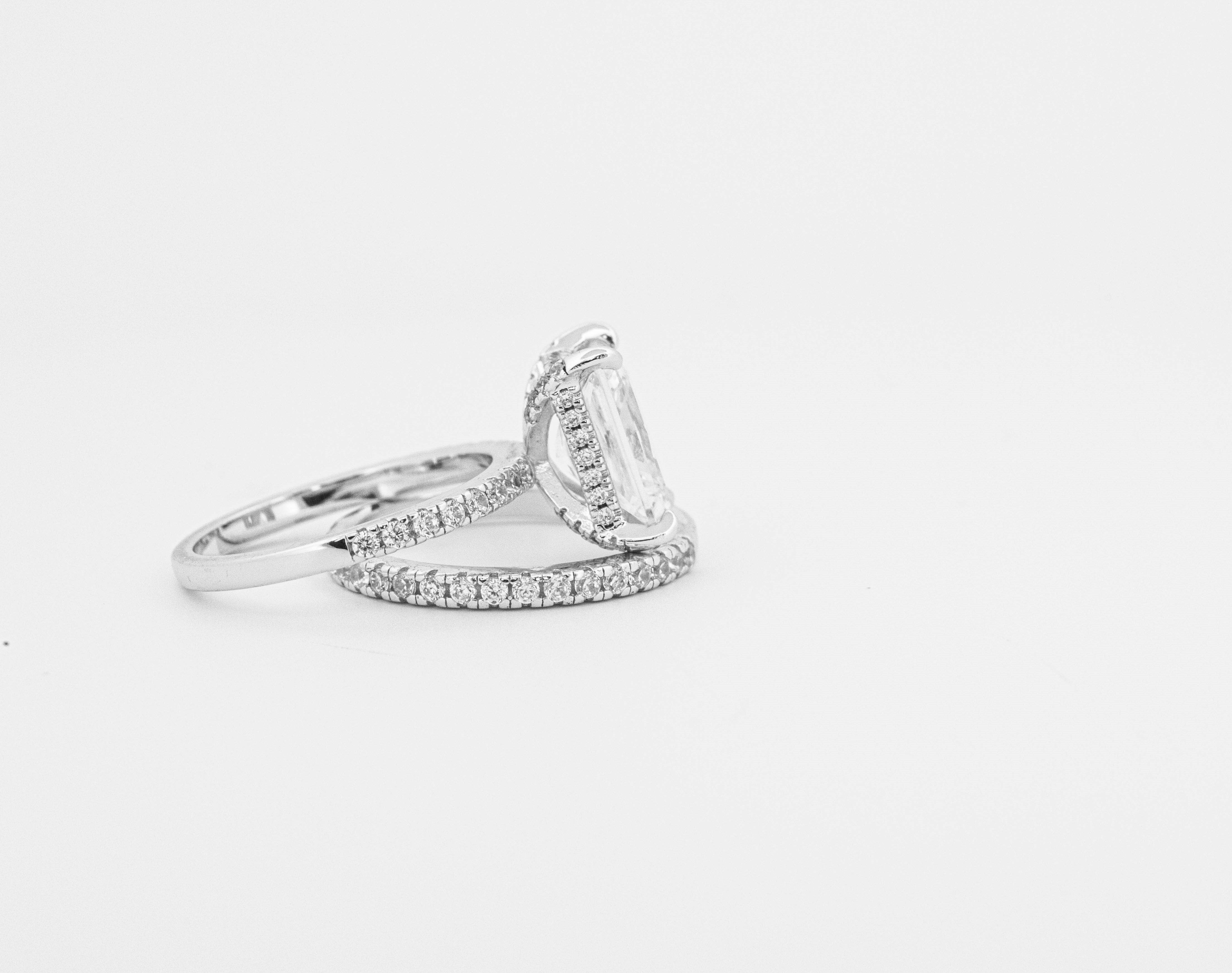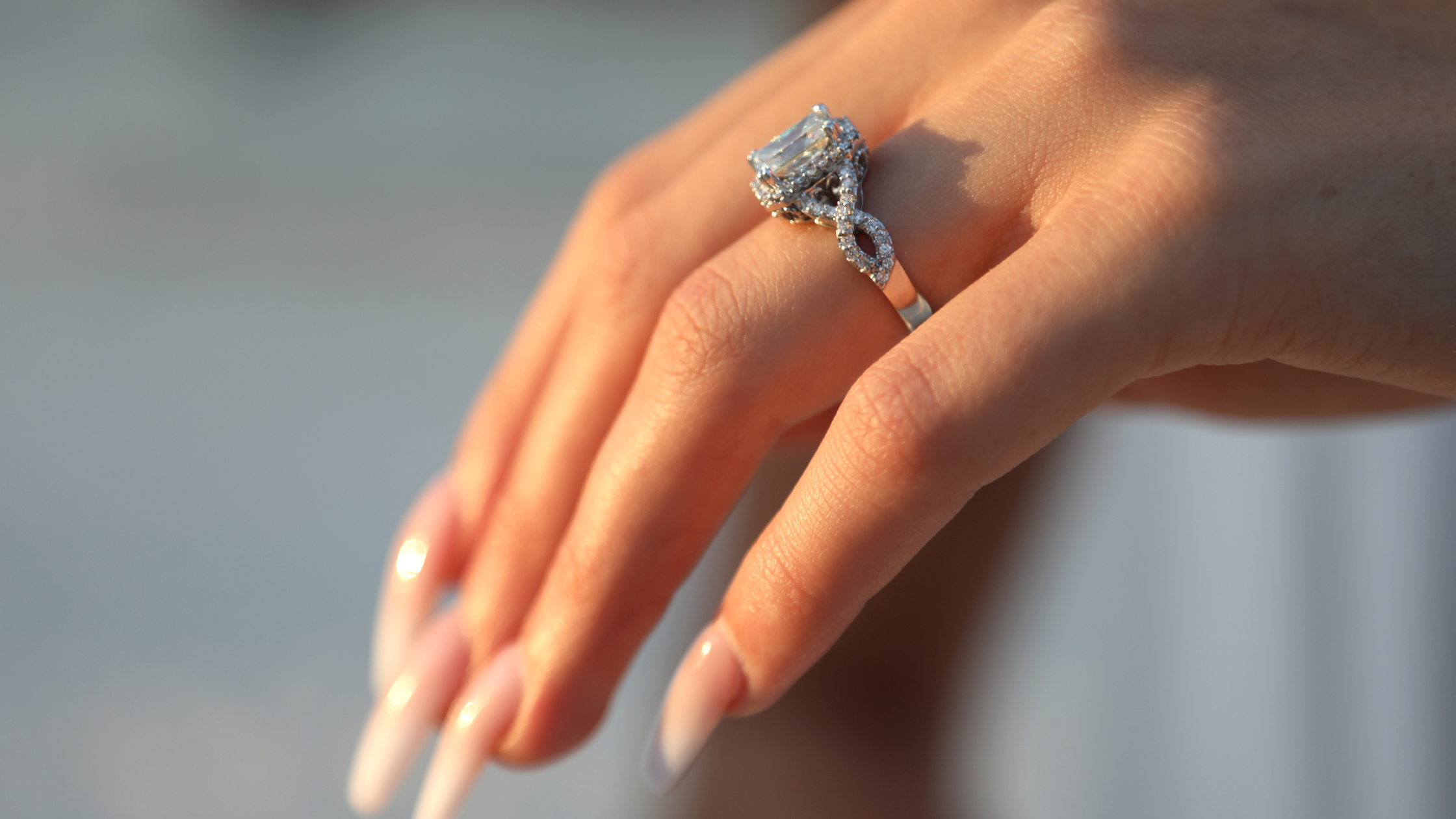
moissanite vs diamonds: understanding the differences for your engagement ring
Are you navigating the challenge of choosing the perfect gemstone for your engagement ring? Picture the moment when the ring's sparkle matches the joy in your eyes. Yet, here stands a common crossroad for many - the choice between the timeless elegance of diamonds and the contemporary allure of moissanite. Both gemstones boast their unique charm and significance, but the decision between them can be complex.
In this detailed guide, we'll explore the distinct worlds of moissanite and diamonds. Our goal is to highlight the differences, advantages, and considerations for each, aiding you in making a decision that aligns with your personal narrative and values. Join us as we uncover the nuances of these gemstones, where clarity and brilliance intertwine, ensuring your choice is as meaningful as the moment the ring is presented!
the 4 Cs of diamond quality
Diamonds have long been the epitome of luxury and elegance, especially in engagement rings. Their allure lies not just in their natural beauty but also in their intricate quality metrics, known as the 4 Cs: Cut, Color, Clarity, and Carat.
- Cut: The first 'C' stands for Cut, crucial in determining a diamond's brilliance and sparkle. A diamond's cut is an art, transforming a rough stone into a dazzling gem. The cut is evaluated based on proportions, symmetry, and polish, which collectively influence how light is reflected within the diamond, contributing to its overall brilliance.
- Color: The second 'C' is Color. Diamonds are graded from colorless to light yellow or brown, using a scale from D (colorless) to Z. The closer a diamond is to being colorless, typically, the more valuable it is. However, fancy color diamonds, in hues like blue, green, or pink, break this norm with their unique and highly valued color saturation.
- Clarity: Clarity, the third 'C', involves the absence of inclusions (internal flaws) and blemishes (external flaws). Graded from Flawless to Included, the clarity of a diamond directly impacts its luminosity and rarity. A diamond with minimal flaws is a rare find and thus more valuable.
- Carat: Finally, Carat refers to a diamond's weight. Larger diamonds are rarer and, as a result, more prized. However, it's important to balance carat weight with the other Cs, as a larger diamond isn't always more valuable if it lacks in other quality aspects.
understanding diamond pricing and market value
The pricing and market value of diamonds are influenced by these quality factors and global market dynamics. The rarer the diamond, especially in terms of carat, cut, color, and clarity, the higher its value. However, it's crucial to note that diamonds are also subject to the fluctuations of international markets.
Economic conditions, trends in the jewelry industry, and supply and demand dynamics play significant roles. For instance, economic downturns can reduce demand, affecting prices. Similarly, trends can elevate the value of certain diamond types. The diamond industry, dominated by a few key players, can also affect prices through supply control.
Thus, the value of a diamond is a complex interplay of its inherent qualities and the ever-changing economic and market trends. This dynamic nature adds to the allure of diamonds, making them not just a symbol of love but also an interesting study in economics.
moissanite's fascinating origins
The story of moissanite begins with a remarkable discovery in 1893. French chemist Henri Moissan found what he initially thought were diamonds in a meteor crater in Arizona. These crystals were later identified as silicon carbide, a naturally occurring substance that Moissan had discovered. Due to its rarity in nature, the moissanite used in jewelry today is created in laboratories.
The journey to creating gem-quality moissanite was filled with challenges. It wasn't until the late 1980s that the company Cree succeeded in producing large, single crystals of silicon carbide that could be cut into gemstones. This breakthrough marked the beginning of moissanite's journey as a desirable diamond alternative.
Moissanite's appeal lies in its combination of durability, brilliance, and fire, along with its ethical and environmental credentials. Ranking just below diamonds on the Mohs scale of hardness, it's well-suited for daily wear. But what truly sets it apart is its superior brilliance and fire - the ability to reflect light and create a rainbow effect.
Additionally, as a lab-created stone, moissanite sidesteps the ethical and environmental concerns associated with diamond mining. Today, it stands as a high-quality, affordable, and ethical choice for engagement rings, with continually improving color and clarity thanks to technological advancements.
the brilliance and durability of moissanite
Moissanite's popularity isn't just due to its ethical and environmental advantages. Its physical properties, too, are noteworthy. Moissanite boasts an exceptional brilliance, outshining many traditional gemstones with its high refractive index. This attribute allows it to reflect more light than a diamond, giving it a distinctive and captivating sparkle.
Moreover, its dispersion or fire - the ability to split light into various colors - is significantly higher than that of a diamond. This creates a stunning visual display of colors, making moissanite an eye-catching choice for an engagement ring.
Durability is another hallmark of moissanite. It scores a remarkable 9.25 on the Mohs scale, making it highly resistant to scratches and abrasion. Its resilience to heat and pressure further adds to its practicality as an everyday gemstone. Moissanite's blend of beauty and durability makes it an increasingly popular choice for those seeking a unique and long-lasting engagement ring.
ethical and environmental considerations
In the realm of ethical and environmental considerations, moissanite emerges as a clear leader. Its lab-created nature means that it bypasses the need for mining, thereby avoiding the associated environmental damage such as soil erosion, deforestation, and pollution.
The diamond industry, despite efforts to improve, has a history of ethical challenges, including the exploitation of labor and the trade of conflict diamonds. Moissanite, free from these concerns, offers a peace of mind that is increasingly important to socially conscious consumers. Its creation in controlled environments ensures both ethical sourcing and minimal environmental impact, making it an appealing choice for those who prioritize these values in their jewelry selections.
longevity and wear: diamond and moissanite under the lens
Choosing an engagement ring is a decision for a lifetime, and understanding the resilience of your gemstone is crucial. Both moissanite and diamonds offer impressive durability, but they do have some distinctions in their longevity and wear.
Diamonds have set the standard for hardness, boasting a top score of 10 on the Mohs scale. This exceptional hardness makes them incredibly resistant to scratches, ensuring they maintain their sparkle through daily wear. Diamonds are not only hard but also tough, meaning they resist breaking from impacts. However, it's important to note that despite their toughness, diamonds can chip or crack if struck at a certain angle.
Moissanite follows closely behind, scoring a 9.25 on the Mohs scale. This makes it more scratch-resistant than most other gemstones and an excellent choice for everyday wear. While moissanite is very hard, it is slightly less tough than diamonds, making it more prone to chipping or cracking upon a hard impact.
Both diamonds and moissanite boast high heat resistance, which is essential for jewelry maintenance, especially during cleaning or repair processes. However, diamonds have a slightly higher threshold for heat tolerance compared to moissanite.
long-term brilliance and shine
In terms of retaining their brilliance over time, both diamonds and moissanite are admirable. Diamonds, known for their lasting sparkle, are less likely to lose their shine as years go by. Moissanite, on the other hand, may see a slight reduction in fire over many years, but it will still maintain a significant degree of brilliance.
In conclusion, while both gemstones are exceptionally durable and suitable for daily wear, diamonds have a slight edge in terms of overall toughness and long-term shine. Moissanite, however, remains a strong contender, offering remarkable resilience and brilliance, making it a worthy alternative for those seeking durability alongside ethical and economic considerations.
choosing what's right for you
Selecting the perfect gemstone for your engagement ring is a deeply personal decision, encompassing aesthetics, ethics, and economics. When torn between moissanite and diamonds, consider these critical factors to ensure your choice resonates with your personal story and lifestyle.
- Aesthetic Appeal: The aesthetic difference between moissanite and diamonds is distinct. Diamonds are celebrated for their unique interplay of brilliance, fire, and scintillation. In contrast, moissanite boasts even greater brilliance and fire, which can result in a more sparkling and colorful appearance. Your preference for a more traditional sparkle or a vibrant display of light and color can guide your decision.
- Ethical Considerations: Values are pivotal in the choice of gemstone. Moissanite, being lab-created, offers peace of mind regarding ethical sourcing and sustainability, free from the concerns of mining. Ethically sourced diamonds are available but can be more costly. If ethical sourcing aligns strongly with your values, moissanite presents a clear advantage.
- Budget: Your budget plays a significant role in your choice. Moissanite, generally more affordable than diamonds, offers a budget-friendly option without compromising on beauty or durability. However, diamonds, while more expensive, are often viewed as investments due to their enduring value and symbolic significance.
- Durability: Durability is key for a ring meant for everyday wear. Diamonds, being the hardest mineral, offer exceptional resistance to scratches. Moissanite, although slightly softer, still ranks high on the hardness scale, making it a durable option as well.
- Size and Shape: Both diamonds and moissanite are available in various cuts and sizes. If you desire a larger stone, moissanite can provide size without a significant increase in cost. Conversely, if you value the prestige and traditional aspect of diamonds, a smaller, high-quality diamond could be your ideal choice.
In conclusion, choosing between moissanite and diamonds involves a blend of personal aesthetics, ethical considerations, budget constraints, and practicality in wear. Reflect on what each of these factors means to you to make a choice that not only delights the eye but also satisfies the heart and mind.
expertise and customization at your fingertips
When it comes to selecting the perfect engagement ring, Charleston Rings stands as a beacon of expertise and craftsmanship. Specializing in both moissanite and diamond rings, our team brings a wealth of knowledge and skill to guide you through your decision-making process.
At Charleston Rings, we pride ourselves on offering truly custom ring designs. Each piece is crafted with precision and care, ensuring that your ring is not just a piece of jewelry, but a personal statement. Our unique services include personalized consultations, where our experts help you understand the nuances of each gemstone, and assist in selecting the right one that aligns with your style and values.
Customization is at the heart of what we do. We believe that an engagement ring should reflect the individuality of the wearer, and our team is dedicated to bringing your vision to life. Whether it's the perfect cut of a diamond or the fiery brilliance of moissanite, our custom designs are tailored to meet your specific desires.
Quality assurance is a cornerstone of our service. We understand the significance of this purchase, and every ring that leaves our store meets the highest standards of quality and craftsmanship. With Charleston Rings, you can be confident that your engagement ring will be a timeless symbol of love and commitment."
your journey to the perfect ring
In this guide, we've explored the captivating worlds of moissanite and diamonds, unraveling their beauty, durability, and the values they represent. We've examined the importance of personal preferences, ethical considerations, and budget in making this significant decision.
As you reflect on what you value most in a gemstone - be it the timeless elegance of diamonds or the brilliant allure of moissanite - remember that your choice is a reflection of your unique story and journey.
We invite you to visit Charleston Rings for a personalized consultation. Our experts are ready to help you explore your options and find the perfect engagement ring that resonates with your personal style and values. At Charleston Rings, your dream ring awaits, crafted with expertise, care, and a commitment to excellence!




